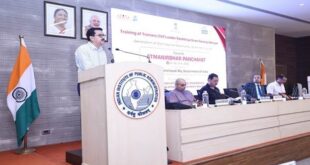- March 22 is observed as Bihar Diwas or Bihar Day to commemorate Bihar’s separation from the Bengal Presidency in 1912.
- The day was first celebrated in 2010
- The demand for separating Bihar from Bengal started in the late 19th century, partly for two reasons:
- The residents began feeling that the region was becoming a backwater and a place of little significance for the new rulers of India.
- The other was the discovery of the ancient Mauryan capital of Pataliputra near the modern-day Patna city in 1895.
- This brought back visions of a glorious past.
Bihar under the East India Company:
- Before the British East India Company took over Bihar, Orissa and Bengal, the region, particularly Patna, was prosperous.
- Soon after the English came to power, the region’s fortunes fell.
- As Bihar, Orissa and Bengal were all part of the Bengal Presidency and placed under one administrative structure, the British paid attention only to Calcutta, British India’s capital, and ignored the rest of the region.
- For instance, the introduction and influence of English language in the Bengal Presidency were mostly limited to the British administrative centres of Calcutta.
- This led to the rise of a Bengali middle class as they dominated not only the administrative jobs but also other modern-day professions in hospitals, courts and schools.
- Meanwhile, Biharis, who once monopolized white-collar jobs in the government until 1835, struggled to gain employment as they didn’t get an opportunity to learn the new language.
The demand for separation:
- The demand became much more vocal prior to the 1905 Bengal partition.
- However, their hopes were dashed as the Britishers broke up Bengal along communal lines rather than from the administrative point of view.
- Following 1905, a majority of Bengalis began to look upon the possibility of a separate Bihar more favorably.
- New leaders such as Ali Imam, Hassan Iman, Muhammad Fakhruddin and Mazharul Haque also joined the movement.
- The Orissa region of Bengal also started to witness the rise in demand for a separate state.
Bihar Provincial Conference:
- In 1908, the first session of the Bihar Provincial Conference was held, where Muhammad Fakhruddin moved a resolution demanding Bihar’s separation from Bengal.
- Bihar Landholder’s Association and Bihar Provincial Muslim League came together and addressed the Lieutenant-Governor of Bihar and West Bengal, during his visit to Patna regarding their demand for separation.
- This address was considered to be a representative view of both Bihari Muslim and Hindu literati as well as that of the provincial landholders.
The final separation:
- Finally, in December 1911, during the Delhi Durbar, the British government announced that Bihar and Orissa would be carved out of Bengal on the occasion of George V’s coronation as the Emperor of India.
- The declaration was notified on March 22, 1912, and the two regions appeared as separate states on India’s map.
SOURCE: THE HINDU, THE ECONOMIC TIMES, PIB
 Chinmaya IAS Academy – Current Affairs Chinmaya IAS Academy – Current Affairs
Chinmaya IAS Academy – Current Affairs Chinmaya IAS Academy – Current Affairs



